We have just suffered through a week and a half of constant rain and the place is
soggy to the bone, but production is proceeding at a good pace, in spite of the
conditions. The panorama shot above was taken two days after the rain when we had
several days of sunny but cold conditions. We are up to our necks in red oak timbers!
Tim and the crew estimate completion a little ahead of schedule so the crew can
have a brief rest before heading to Pagosa Springs.
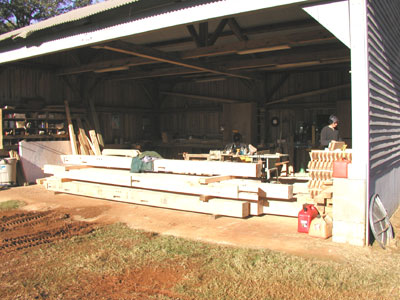
|
The early morning light pours into Brace Land as Keith begins his work on the brace
stock. You can see him standing next to the rather large stack of braces that he
has already finished.
Working brace stock is a very slow and laborious process.
|
You may remember the pictures of John and his crew planing the rough brace stock.
Once planned, the tenons and the general shape of the undercut brace are cut with
a precision band saw.
Keith has already done the initial cuts and is now shaping and finishing the individual
braces.
|
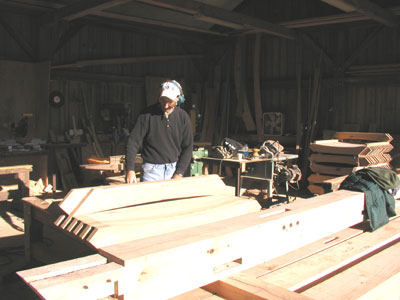
|
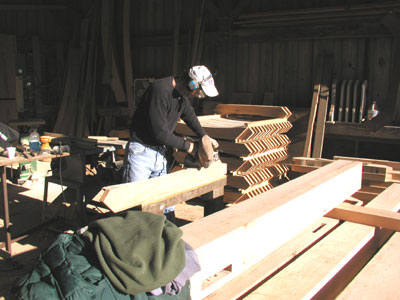
|
Although the band saw produces a clean cut, it can not reproduce the nicely arched
sections of the brace, so, all the final shaping is done by hand and a power belt
sander.
Each brace takes about 2 hours of hand work to reach the finished stage. You can
more clearly see the stack of braces Keith has already finished. There are a lot
of man-hours in that stack!
|
Meanwhile, back in the shop, Richard is setting down on the job. Really! But, it's
the only way he can get a straight on view of the complex housing he is cutting.
Notice the mound of red oak shavings below the horizontal milling bit. It takes
a very soft touch with Mr. Mortiser to cut these precise housings and Richard is
rather well practiced at the art!
|
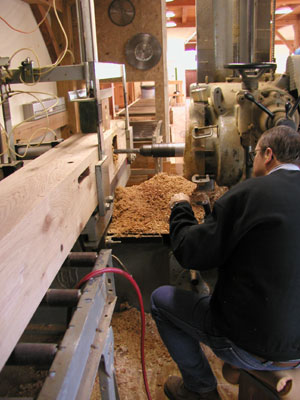
|
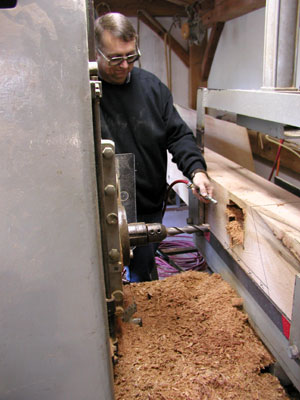
|
Here, Richard is clearing the shavings from the housing so that he can recheck the
cut against the scribe lines. Housings with splines require close tolerances to
insure everything will fit when the frame is raised. Of course, this housing still
must be finished by hand before it passes QC inspection.
|
|
Once he is finished milling one side, the timber must be flipped so that he can
gain access to the other side. The tool Richard is holding is one of his inventions.
These timbers weight close to 1,000 pounds. Turning them can be very difficult and
there is the risk of damage to the timber face. The "timber flipper" clamps
securely to the timber using soft pine liners. The long handle gives Richard the
leverage necessary to control the weight and movement of the timber. The result,
a timber that is slowly turned without marking the surface.
|
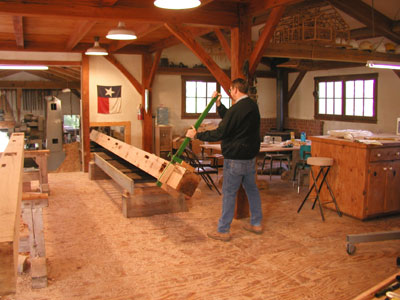
|
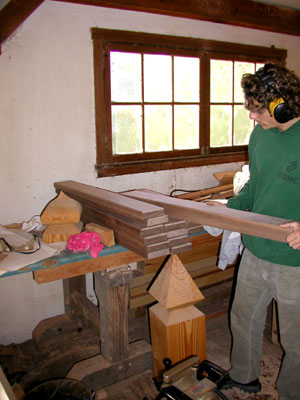
|
Travis has finished milling all of the black walnut splines that will be used in
the frame. The splines have not been oiled so it's difficult to see the naturally
dark character of the black walnut.
|
|
I hope you can see the nice grain and color of this black walnut. It is one of the
nicest accent woods known and it's hardness makes it an excellent material to use
as splines. The dark rich color of the black walnut should contrast nicely with
the red oak. This frame should be as beautiful as it is functional.
|
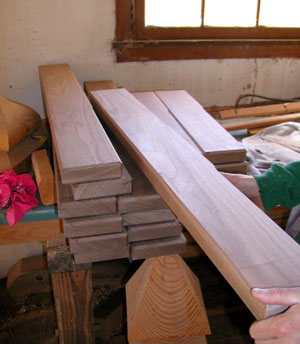
|
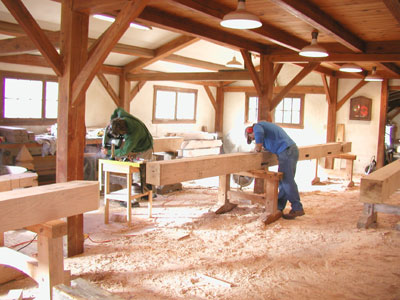
|
Work in the shops continue despite the very cold north west wind, but the sun is
out and it's not raining! Life is indeed good.
There are a lot fewer unfinished timbers than finished ones!
|